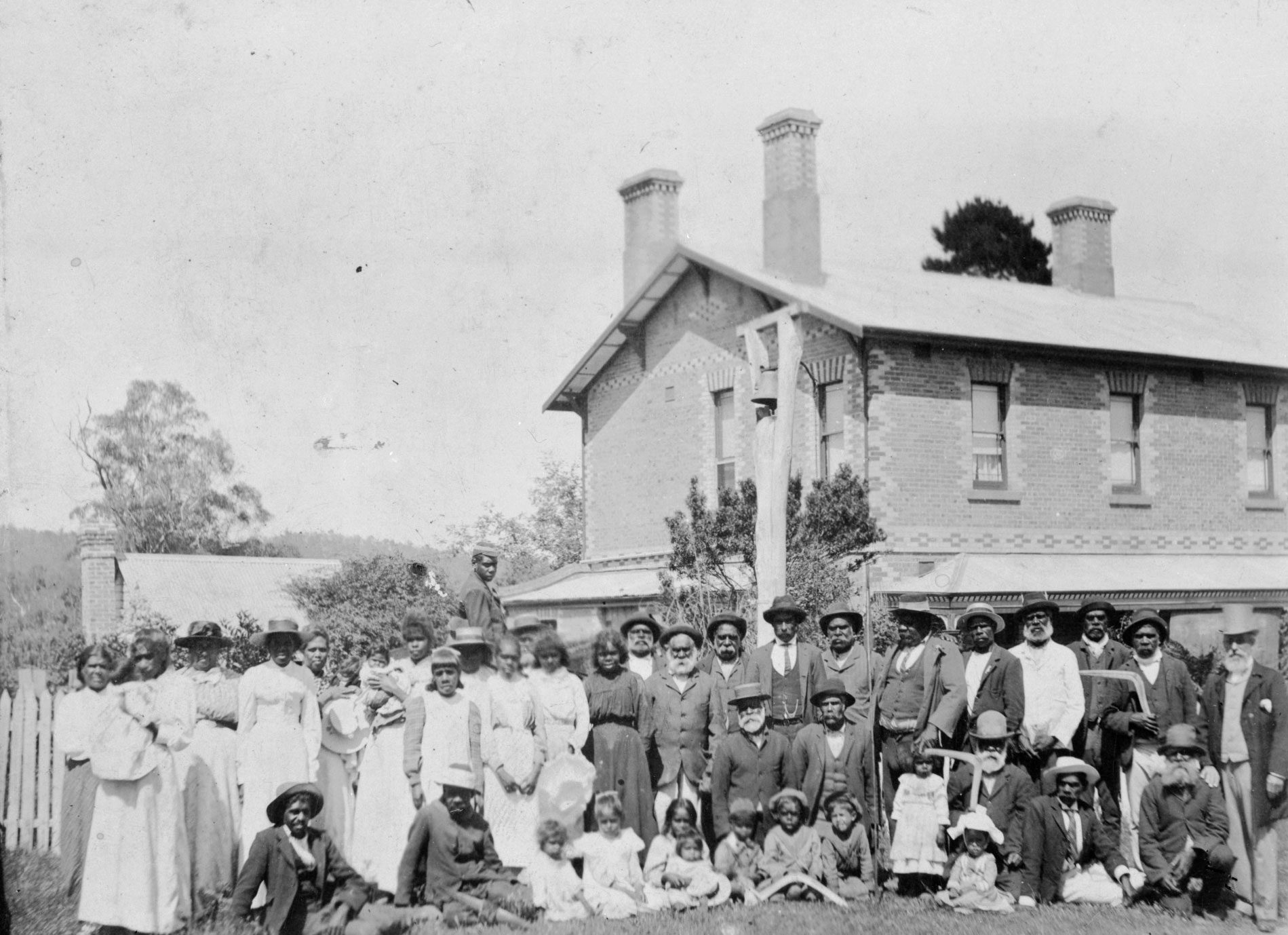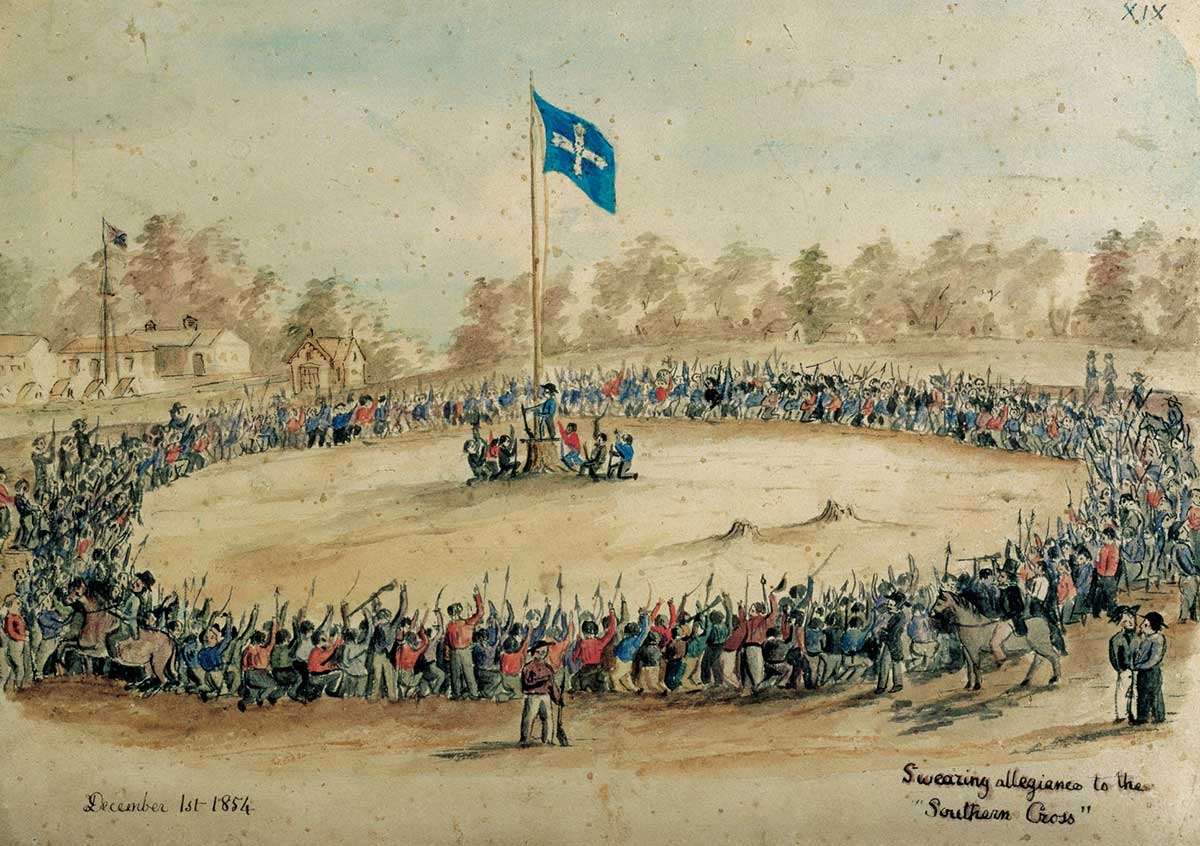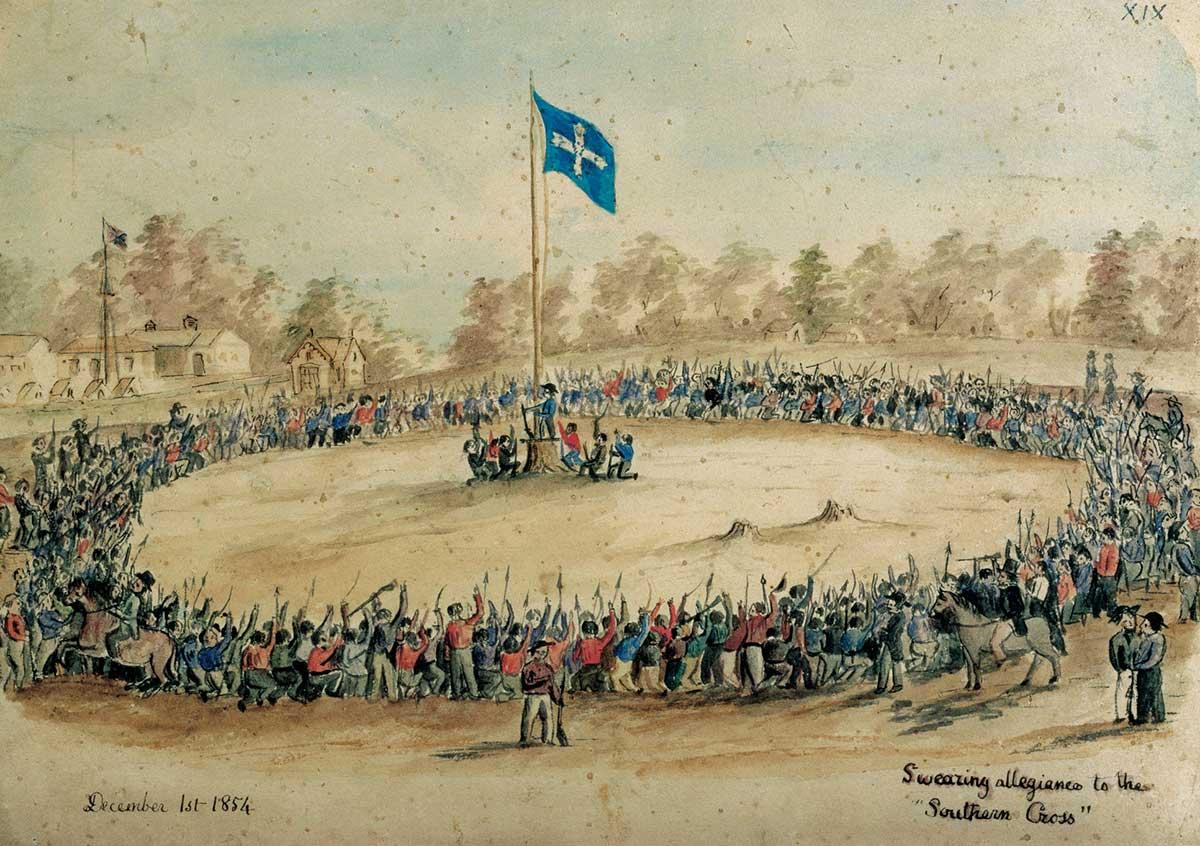Learning module:
The Spiritstone Saga
The Spiritstone Saga
18. A tiny piece of Indigenous land
1863: Coranderrk Aboriginal Reserve established

You make the two-day horse journey from Melbourne out to Coranderrk. As you ride up the brown, dusty road, you see a series of wooden buildings surrounded by vegetable gardens. The manager, John Green, greets you. As he shows you around the Aboriginal Reserve, you can tell that he is a good man, respectful of Aboriginal traditions.
‘We have 2300 acres of land here, as a homeland for Aboriginal people. Kulin nation clan leaders Simon Wonga and William Barak asked the government for this land, and here we are,’ says Mr Green.
As you walk around, you see other Melburnians visiting the area. You realise they are tourists, here to buy homemade goods made by the Aboriginal residents. You get talking to Mr Green’s secretary, Judith, who is full of information.
‘It’s a difficult situation here, this reserve,’ she says in her soft voice. ‘The Aboriginal people have had to fight against people who want to control their lives, racism is everywhere. All they want is the rights to the land that they’ve lived on for thousands of years. But their population has dropped so much since us whites have arrived. I hear there were about 12,000 in Victoria and now there’s only 2000. A lot of people think they’re a dying race. A real shame.’
Back in John Green’s office, he explains why the reserve was set up.
‘The British Government, which still controls this colony from afar, believes special laws are needed to protect Aboriginal people. As you have no doubt seen, they have been the victims of violence since settlers arrived.’
You nod in agreement, thinking back to what you saw in Van Diemen’s land and heard about at Myall Creek.
‘I believe the government will use our system here at Coranderrk to set up other reserves across the land. A “Board for the Protection of the Aborigines” is going to be set up, which will record the Aboriginal population, provide food and housing, and run reservations like this one. I reckon this board’ll have a say in where Aboriginal people can live and work.’
‘But doesn’t that take away their freedom?’ you ask.
‘Yes. That is the aim, I feel. Many white officials see the Aboriginal people as “childlike”. They think that because they have a different way of life, they aren’t fully “civilised”. In my opinion, this couldn’t be further from the truth. The Aboriginal people know how to live in this harsh land without modern technology. So who is more advanced?’
With that question in your mind, you bid farewell to John and the friends you made at Coranderrk.
You follow the happenings at the station by reading the newspapers. Later, John Green was made to leave and the new managers did not respect Aboriginal people, whose health and housing got worse. The Aboriginal residents protested. Years later, when the government wanted to ‘absorb’ all mixed-race people, all Aboriginal people with European parents or grandparents were removed by force to a white community.
The stone glows orange, and delivers knowledge from the future:
‘Coranderrk is a sad tale. It closed after sixty years of operation. But in 1991 the land was handed back to the Wurundjeri traditional owners.’
‘Show respect for an Aboriginal leader by writing about his life.’

Your task
- William Barak died in 1903. You are to write a piece in the newspaper, celebrating his life, by completing the sentences below. You may need to do further research to complete this task. The Defining Moment 1863 Protests against paternalism — Coranderrk Aboriginal Reserve established is a good place to start.
You completed the task. The Spiritstone glows green.
‘A group of miners in nearby Ballarat is preparing for trouble against the government. Find out more.’ Go to 19.







